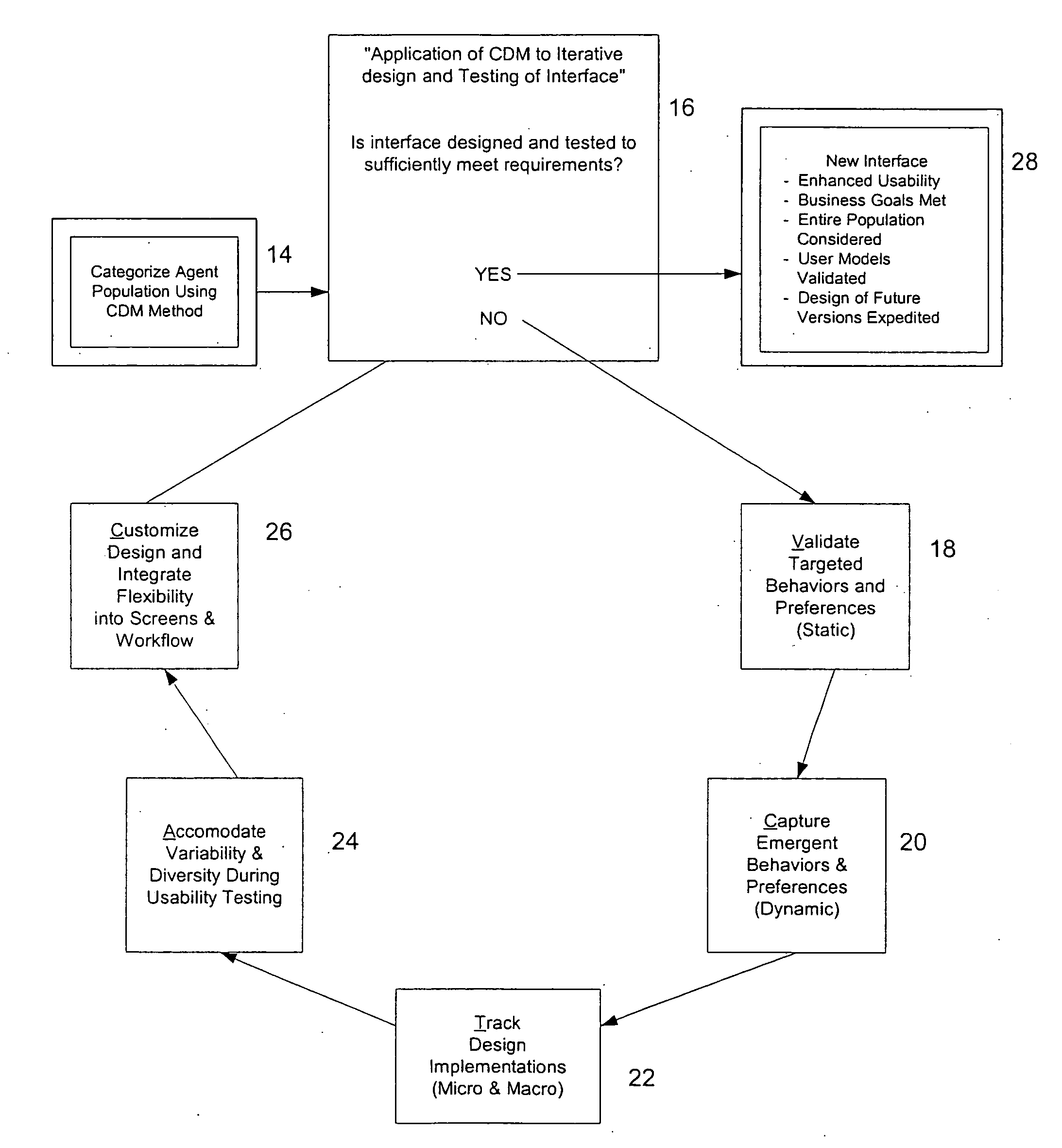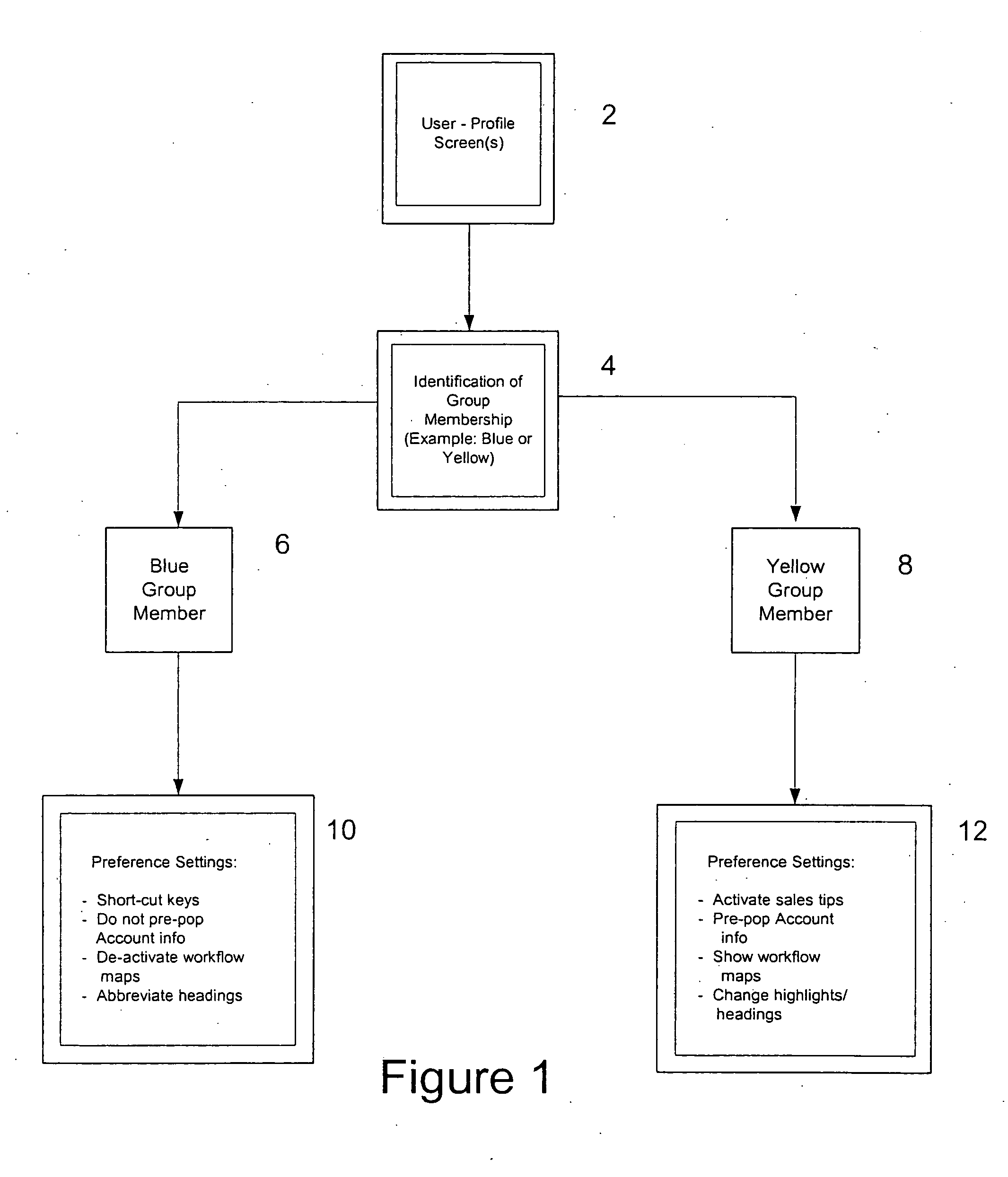Method for integrating user models to interface design
a user model and interface technology, applied in the field of human factors user interface design and analysis, can solve the problems of poor design, poor design, and large risk that very few users will be best accommodated by the interface, and the failure of workflow tasks or design implementation
- Summary
- Abstract
- Description
- Claims
- Application Information
AI Technical Summary
Benefits of technology
Problems solved by technology
Method used
Image
Examples
Embodiment Construction
[0016] An objective of the disclosed invention is to establish a method that systematically and thoroughly applies user models derived through the CDM method to the design and testing phase of interface development. Rather than assuming a single set of behaviors or characteristics that represents the user population, the CDM method categorizes the user population into a small number of behaviorally distinctive groups. The present invention then extends this process and applies it directly to interface design.
[0017] This unique approach to usability testing and systems design ensures that the range of needs and preferences of the entire user population (e.g., each group derived through the CDM method) is considered. Customizing usability testing for each user group and allowing for flexibility in performance, not simply considering “average” behavior, allows for an improved understanding of the users and improved interface design leading to improved performance.
[0018] In contrast t...
PUM
 Login to View More
Login to View More Abstract
Description
Claims
Application Information
 Login to View More
Login to View More - R&D
- Intellectual Property
- Life Sciences
- Materials
- Tech Scout
- Unparalleled Data Quality
- Higher Quality Content
- 60% Fewer Hallucinations
Browse by: Latest US Patents, China's latest patents, Technical Efficacy Thesaurus, Application Domain, Technology Topic, Popular Technical Reports.
© 2025 PatSnap. All rights reserved.Legal|Privacy policy|Modern Slavery Act Transparency Statement|Sitemap|About US| Contact US: help@patsnap.com



